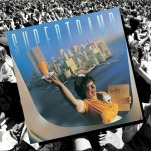Spike Jonze uses close-ups to teach us about him in Her
Most of us are accomplished watchers of TV and film, so we intuitively understand some of the concepts lurking in dense film-theory tomes. You won’t need them for Internet Film School, The A.V. Club’s column about film and television. In each installment, we explore a basic element of visual composition and analyze examples to understand how the formal properties of film and television manipulate viewers.
Spike Jonze’s Her is a conventional love story with an unconventional constraint—one of the lovers is an inhuman, disembodied consciousness that interacts with the other via an earbud. Typically, romances rely on a small stable of predictable-but-effective techniques that convince the audience it’s witnessing the first, chemical blush of fresh love.
The most basic of these techniques is the two-shot, in which the director places both prospective lovers in the same frame. A series of two-shots, stacked one after the other, has a cumulative effect on the audience, which begins to expect to see these two characters together in every shot. After a while, shots that only contain one of the lovers will strike the audience as oddly empty, even if the sole lover in it is centrally framed in a way that would make it impossible for the other to be in the shot. By manipulating audience expectations in this way, the missing lover becomes an absent-presence in the film, something the audience wants to see. If the director only includes one lover in shots for an extended period of time, the audience will begin to feel that something is “wrong,” because the director is confounding the expectation he or she created. When the director relents and fulfills that expectation with a two-shot of the lovers reunited, the frame suddenly seems somehow more “correct” to the audience.
The problem Jonze faced in directing Her becomes obvious: Because “she” is an operating system, Scarlett Johansson’s “Samantha” can’t ever occupy the same frame as Joaquin Phoenix’s Theodore. Jonze cannot rely on the emotional resonance created by on-screen proximity, but he still needs to find a way to make the audience feel that these lovers share a profound connection. His solution is simple: He will force the audience to study Phoenix’s face, repeatedly and at some length, by employing unnecessary jump cuts and unnecessarily slow zoom-ins.
That these cuts and zooms involve Phoenix’s face is no accident. Human beings are hardwired to read faces. Large swaths of mental real estate are devoted to facial processing, to recognizing that certain configurations of lips and eyes correspond to a particular set of emotions. The hardware behind facial processing is so powerful that people frequently see faces where none actually exist—for example, on a piece of burnt toast or when a close-parenthesis follows a colon. Jonze exploits this innate desire to understand faces, creating an emotional connection to Theodore that approximates the power of expectation two-shots would have produced.
To wit, when Theodore first decides to acquire his new operating system/future girlfriend, Jonze begins the scene with an off-center medium shot…
The compositional imbalance of the shot alerts the audience to the fact that something is wrong with Theodore, that something is missing. Had he been in the center of the shot, he would have possessed a more commanding presence, almost as if the world were centered on, or at least presently revolved around, the power of his intellect in action. “Leave this important man alone,” it would have suggested. “He is having important thoughts.”
Instead, the audience is presented with an image of a man incapable of dominating a frame even when he’s the only significant element in it. Put differently, he seems as important as the empty space frame-right, which is only important by virtue of its emptiness. If there were something or someone filling it up, after all, he might not even be contemplating buying this new operating system, which is what he’s doing.









![Rob Reiner's son booked for murder amid homicide investigation [Updated]](https://img.pastemagazine.com/wp-content/avuploads/2025/12/15131025/MixCollage-15-Dec-2025-01-10-PM-9121.jpg)

























![HBO teases new Euphoria, Larry David, and much more in 2026 sizzle reel [Updated]](https://img.pastemagazine.com/wp-content/avuploads/2025/12/12100344/MixCollage-12-Dec-2025-09-56-AM-9137.jpg)




